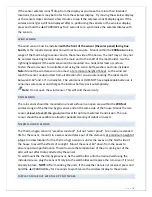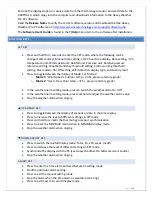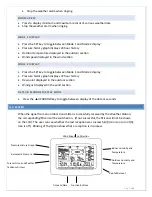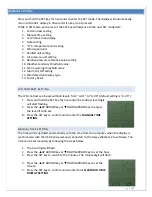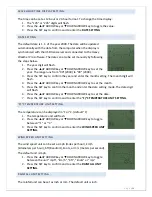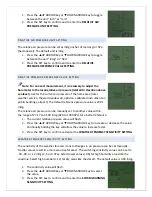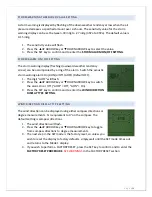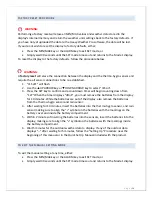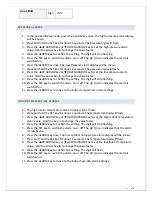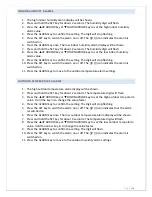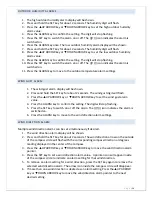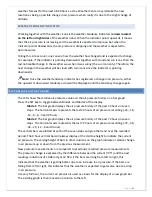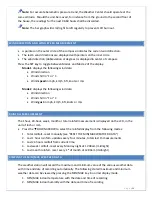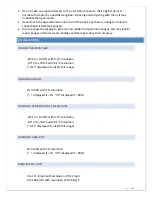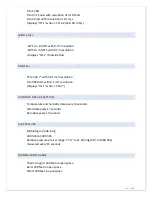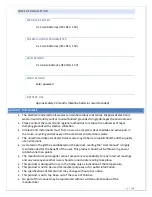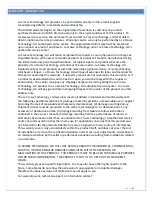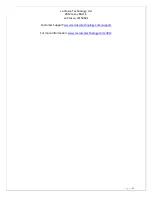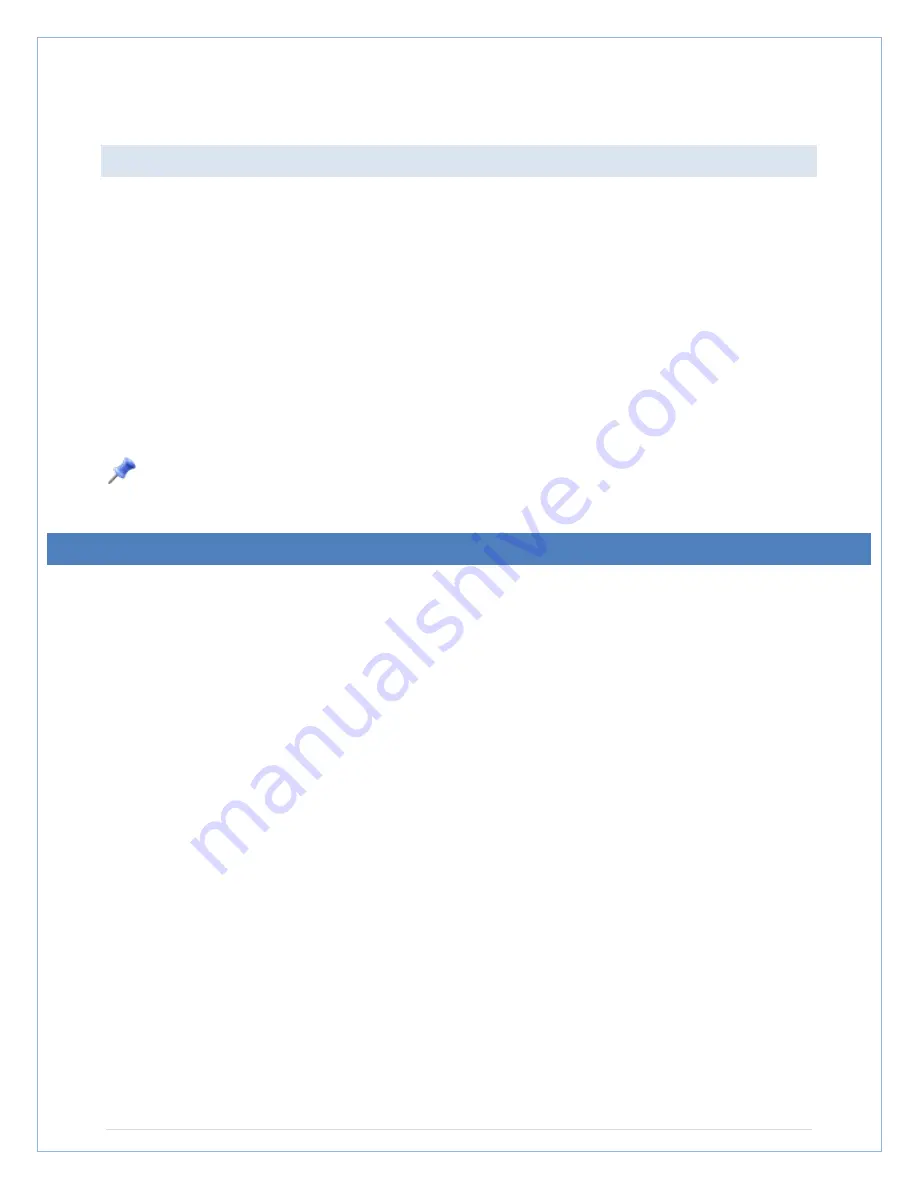
P a g e
| 23
weather forecast for the next 48-60 hours, as the Weather Center may mistake the new
location as being a possible change in air-pressure when really it is due to the slight change of
altitude.
WEATHER TENDENCY INDICATOR
Working together with the weather icons is the weather tendency indicators (
arrows located
on the left and right sides
of the weather icons). When the indicator points upwards, it means
that the air-pressure is increasing and the weather is expected to improve, but when the
indicator points downwards, the air-pressure is dropping and the weather is expected to
become worse.
Taking this into account, one can see how the weather has changed and is expected to change.
For example, if the indicator is pointing downwards together with cloud and sun icons, then the
last noticeable change in the weather was when it was sunny (the sun icon only). Therefore, the
next change in the weather will be cloud with rain icons since the indicator is pointing
downwards.
Note:
Once the weather tendency indicator has registered a change in air pressure, either
the upward or downward tendency arrow will be displayed until the tendency changes again.
AIR PRESSURE HISTORY GRAPH
The LCD shows the relative air pressure value and the air pressure history on a bar graph.
Press the SET key to toggle between Mode1 and Mode2 of the display.
Mode 1
: The bar graph displays the air pressure history of the past 24 hours in seven
steps. The horizontal axis represents the last 24 hours of air pressure recording (-24, -18,
-12, -8, -6, -3 and 0 hour).
Mode 2
: The bar graph displays the air pressure history of the past 72 hours in seven
steps. The horizontal axis represents the last 72 hours of air pressure recording (-72, -48,
-36, -24, -12, -6 and 0 hour).
The vertical bars are plotted at each of the seven steps and give the trend over the recorded
period. The 0 hour vertical bar will always display at the midline height to indicate the current
air pressure. The varying height of bars in other columns on the graph indicate a relative change
in air pressure up or down from the previous measurement.
New pressure measurements are compared to previously recorded pressure measurements.
The pressure change is expressed by the difference between the current ("0h") and the past
readings in divisions of ±0.06 inHg or ±2 hPa. If the bars are rising from left to right, this
indicates that the weather is getting better due to an increase in air pressure. If the bars are
falling from left to right, this indicates that the weather is expected to get worse due to a drop
in air pressure.
At every full hour, the current air pressure is used as a basis for the display of a new graph bar.
The existing graph is then moved one column to the left.

